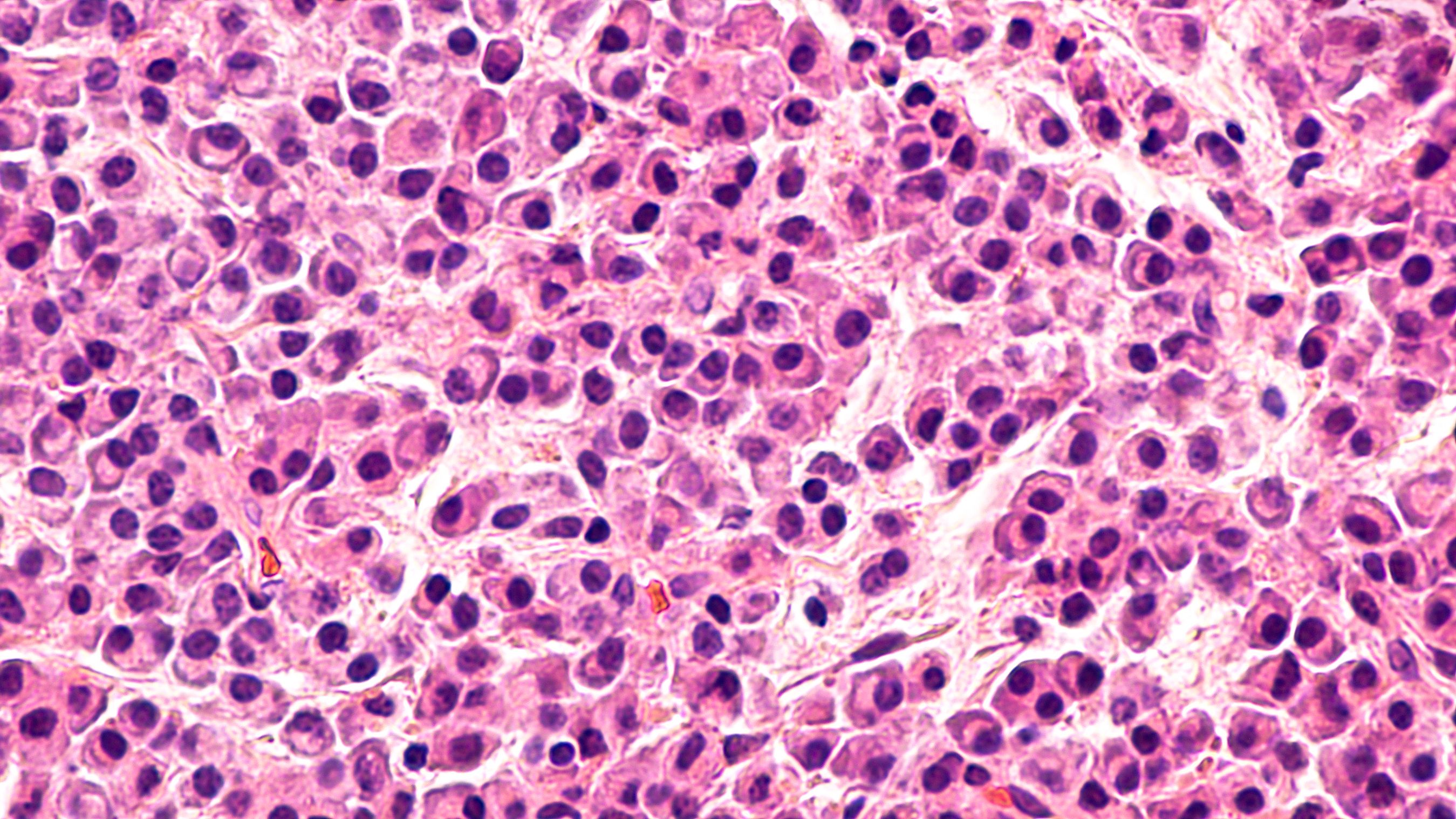LIGHTHOUSE Study Further Confirms Benefit of Melphalan Flufenamide in R/R Multiple Myeloma
Despite the small number of patients enrolled, the confirmatory phase 3 LIGHTHOUSE study of melphalan flufenamide in patients with relapsed/refractory multiple myeloma demonstrates promising safety and efficacy.

Data from the phase 3 LIGHTHOUSE study (NCT04649060) confirms the clinical benefit of melphalan flufenamide (Pepaxto) in patients with relapsed or refractory (R/R) multiple myeloma (RRMM), according to Oncopeptides AB.1
The study began in December 2020 and planned to include 240 patients. However, the FDA requested a partial clinical hold of all studies evaluating melphalan flufenamide in July 2021, leading to patient recruitment in the LIGHTHOUSE study to be halted after randomizing 54 patients. Ultimately, the trial was prematurely terminated in February 2022.
Then in September, 2022, the FDA’s Oncologic Drugs Advisory Committee voted 14 to 2 that melphalan flufenamide is not favorable for adult patients with R/R multiple myeloma, based on findings from the phase 3 OCEAN study (NCT03151811).
However, with 27 patients randomized to each treatment arm of LIGHTHOUSE, the progression-free survival (PFS) in the intention-to-treat (ITT) population was superior for those administered melphalan flufenamide compared with the control arm who were given subcutaneous daratumumab (Darzalex) with supportive dexamethasone (HR, 0.18; P = .0032).
Additionally, the overall response rate (ORR) in the ITT population was superior with melphalan flufenamide (P = .030), as well as overall survival (OS; HR, 0.47; P = .37).
“Data from the phase 3 LIGHTHOUSE study are very encouraging and clearly indicate that the combination of [melphalan flufenamide] and daratumumab has a clinical benefit in patients with [relapsed/refractory multiple myeloma],” said María-Victoria Mateos, MD, PhD, from Salamanca’s University Hospital Hematology Department, and lead investigator of the LIGHTHOUSE study, in the press release. “Multiple myeloma is still an incurable disease for most patients, and we welcome additional evidence on how to combine treatment options with different mode of actions in clinical practice.”
The randomized, controlled, open-label phase 3 LIGHTHOUSE study investigated the efficacy and safety of the combination of melphalan flufenamide plus daratumumab subcutaneous plus dexamethasone vs daratumumab subcutaneous with supportive dexamethasone in patients with R/R multiple myeloma.2 The study was designed as a confirmatory study in addition to the phase 3 OCEAN study.
Patients must have been refractory to at least an immunomodulatory agent (IMiD) and a proteasome inhibitor (PI) or had received 3 or more prior lines of therapy, including a PI and an IMiD. Male and women of childbearing potential had to use contraception during the time of treatment and during a specified time after receiving the last dose.
In the experimental arm, each cycle lasted 28 days and patients were administered melphalan flufenamide 30 mg intravenously on day 1 of each cycle, dexamethasone 40 mg twice a week (if ≥75 years 20 mg weekly), and daratumumab 1800 mg in a subcutaneous injection on days 1, 8, 15 and 22 of cycle 1 and 2, days 1 and 15 of cycle 3-6, and day 1 of cycle 7+. The control arm received daratumumab 1800 mg subcutaneous injection at the same dosing schedule.
The primary end point of the trial was PFS with secondary end points including ORR, OS, duration of response, frequency and grade of treatment emergent adverse events, best response, clinical benefit rate, duration of clinical benefit, time to response, time to progression, and time to next treatment.
Though only 54 patients were enrolled in LIGHTHOUSE at the time of study termination, findings showed that the PFS in the ITT population was superior for those given melphalan flufenamide vs daratumumab. The observed efficacy and safety profile for the control arm administered daratumumab was in line with the approval labels in the United States and Europe with numerically higher PFS and ORR rates.
The safety profile of the melphalan flufenamide and daratumumab subcutaneous combination was also in line with what was previously observed in the phase 1/2 ANCHOR study (NCT03481556), with mostly clinically manageable cytopenias. Prior to the termination of the trial due to FDA concerns, the ANCHOR study was evaluating safety and efficacy of melphalan flufenamide plus dexamethasone in combination with either daratumumab subcutaneous or bortezomib (Velcade) in patients with R/R multiple myeloma.
Overall, these findings confirm the clinical benefit of melphalan flufenamide in the patient population identified by European Medicines Agency (EMA), as the population where melphalan flufenamide adds most clinical value.
“LIGHTHOUSE is the second phase 3 study to confirm the clinical benefit of [melphalan flufenamide]in multiple myeloma patients with a treatment history with no stem-cell transplant or a successful prior stem-cell transplant in line with the recent full European approval,” said Jakob Lindberg, chief executive officer of Oncopeptides, in the press release. “In addition, the LIGHTHOUSE data support the EMA conclusion that there is no indication of absolute overall survival harm from treatment with melflufen.”
References:
Oncopeptides phase 3 LIGHTHOUSE study further confirms clinical benefit of melflufen. News release. Oncopeptides AB. Published October 26, 2022. Accessed October 27, 2022. https://bit.ly/3TL8sCY
Study of melphalan flufenamide (Melflufen) in combination with daratumumab in relapsed refractory multiple myeloma (LIGHTHOUSE). ClinicalTrials.gov. Updated March 4, 2022. Accessed October 27, 2022. https://clinicaltrials.gov/ct2/show/NCT04649060
Gasparetto Explains Rationale for Quadruplet Front Line in Transplant-Ineligible Myeloma
February 22nd 2025In a Community Case Forum in partnership with the North Carolina Oncology Association, Cristina Gasparetto, MD, discussed the CEPHEUS, IMROZ, and BENEFIT trials of treatment for transplant-ineligible newly diagnosed multiple myeloma.
Read More



